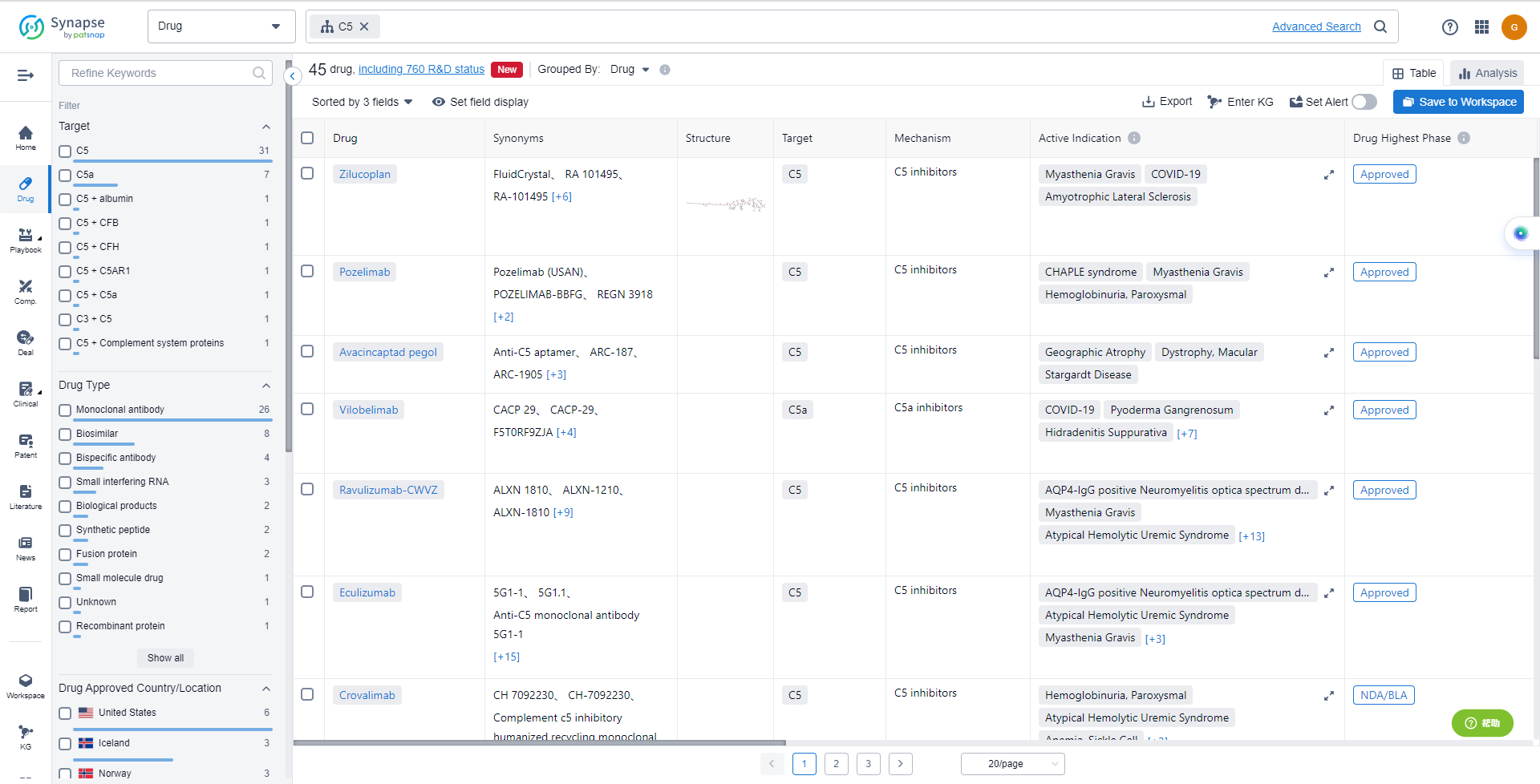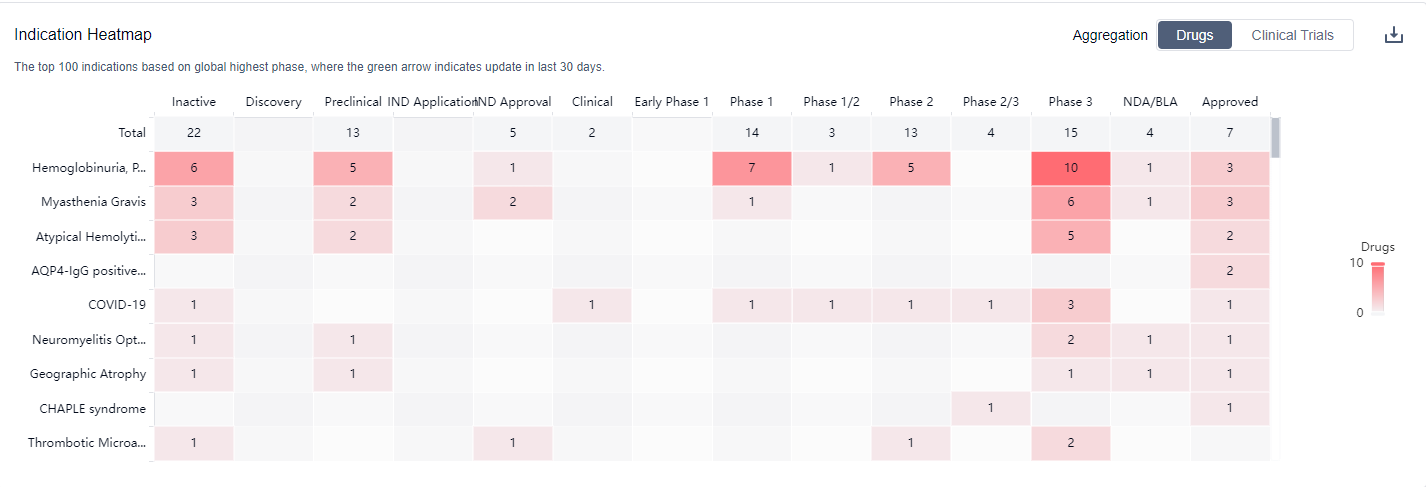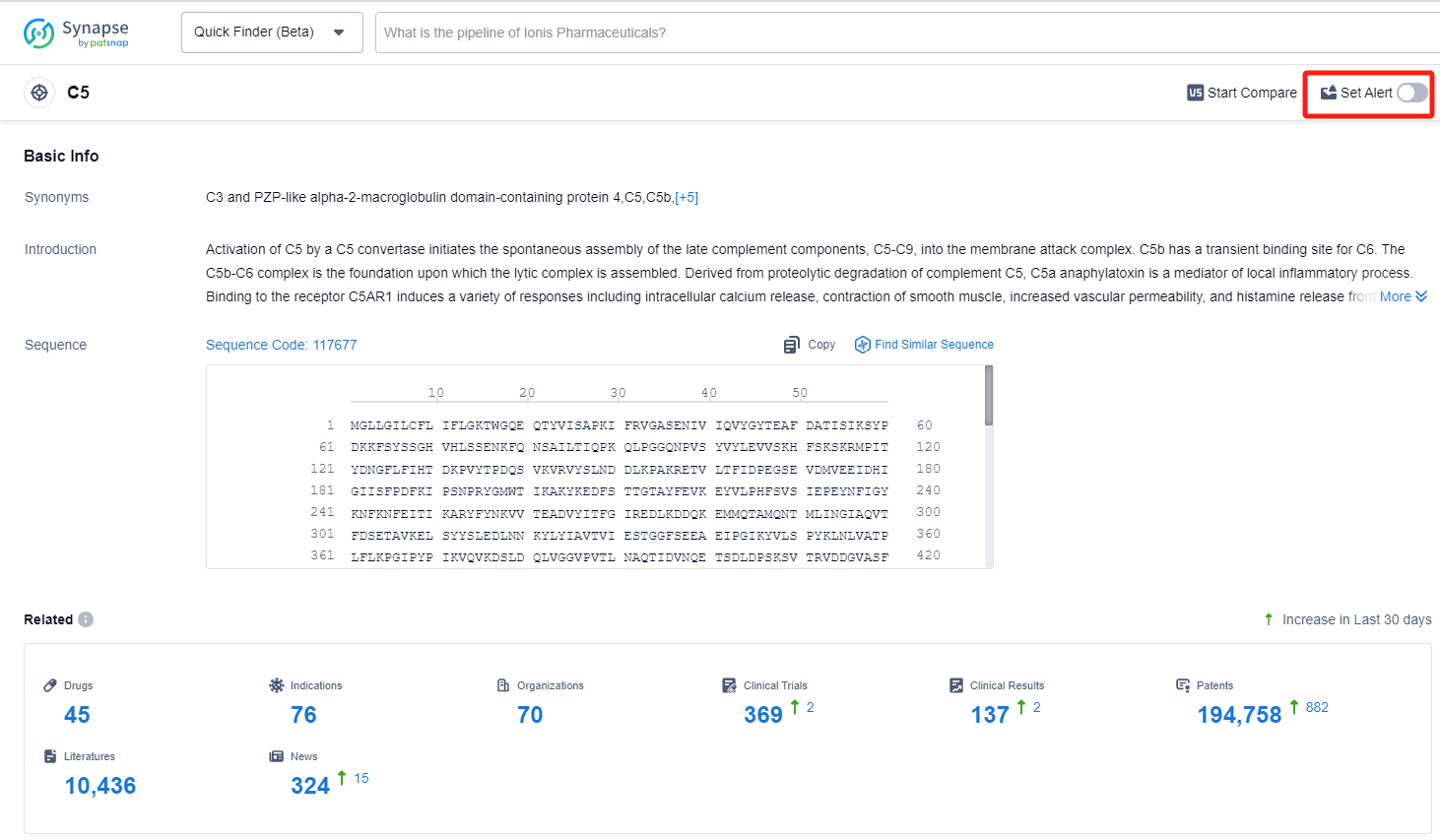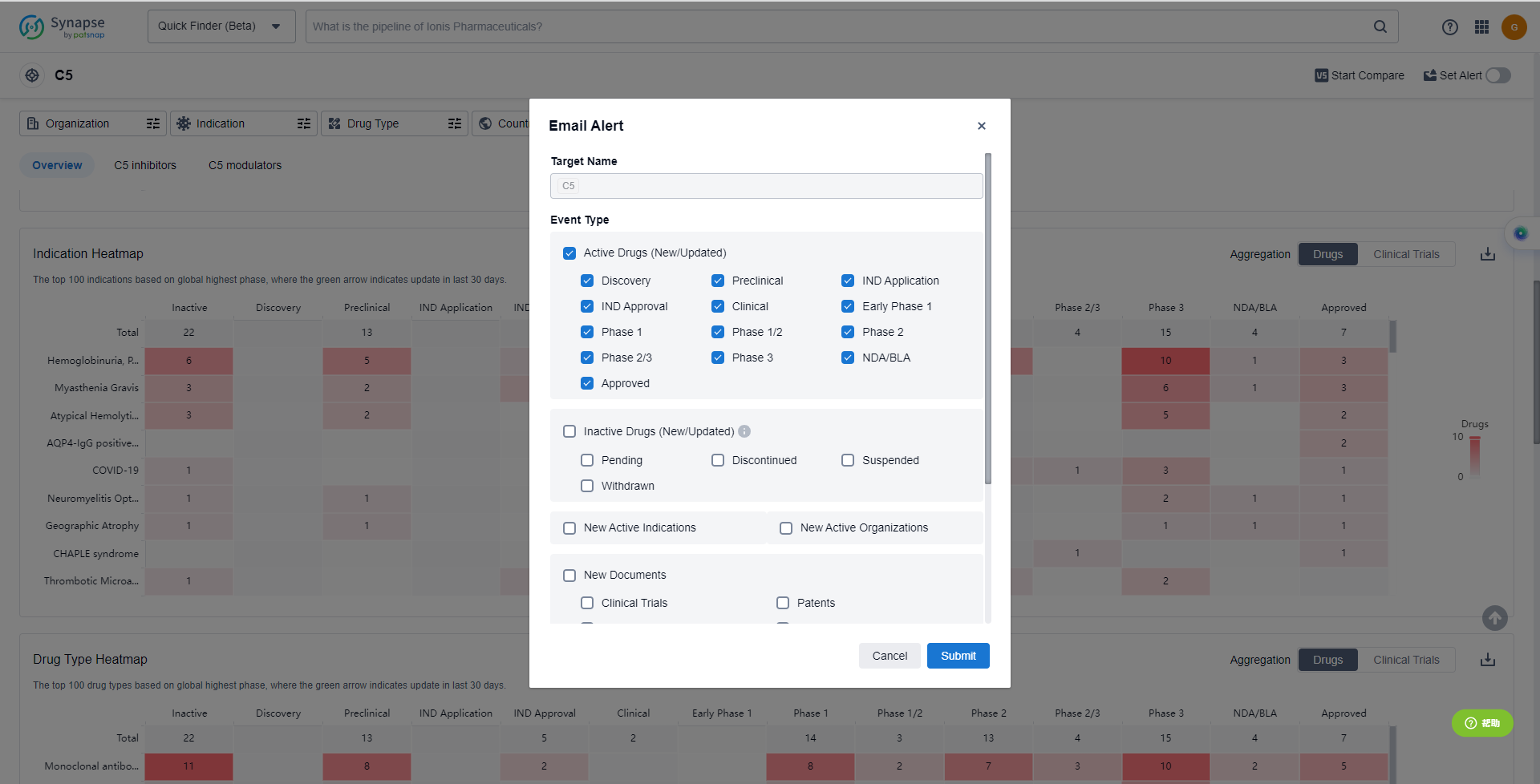What are C5 inhibitors and how do you quickly get the latest development progress?
C5, or the fifth component of complement, plays a crucial role in the human body's immune system. It is a protein that is part of the complement system, a group of proteins that work together to defend against infections and promote inflammation. C5 is involved in the activation of the complement cascade, which leads to the destruction of foreign pathogens, such as bacteria and viruses. Additionally, C5 is also implicated in various inflammatory diseases and disorders, making it an important target for pharmaceutical interventions aimed at modulating the immune response and treating related conditions.
C5 complement inhibitors are protease complexes in the complement system that can defend against biological invasion. C5 complement inhibitors can prevent complement cascade reactions at the C5 level and can prevent diseases caused by immune responses. C5 complement inhibitors can also maintain the production of C3b, which is crucial for the normal phagocytic process of clearing circulating immune complexes and bacterial and fungal pathogens. Because the indications for complement C5 inhibitors are very broad, they can solve diseases caused by a disrupted complement system, and thus have huge market potential.
The current competitive landscape of target C5 is characterized by the presence of multiple companies with diverse R&D pipelines. AstraZeneca PLC stands out as the company with the most advanced R&D progress, with drugs in various phases of development. The highest stage of development on this target is the Approved phase, with a focus on indications such as Hemoglobinuria, Paroxysmal, Myasthenia Gravis, Atypical Hemolytic Uremic Syndrome, and AQP4-IgG positive Neuromyelitis optica spectrum disorder. Monoclonal antibodies are the most common drug type, indicating intense competition in this area. The United States, European Union, and Japan are the leading countries/locations in terms of drug development under target C5, with China also making progress in this field. Overall, target C5 shows a promising future with a diverse range of companies, indications, drug types, and global development.
How do they work?
C5 inhibitors are a type of medication that target and inhibit the activity of the complement protein C5. The complement system is a part of the immune system that helps to identify and eliminate foreign substances, such as bacteria and viruses. However, in certain conditions, the complement system can become overactive and cause damage to healthy tissues.
C5 inhibitors specifically block the action of the C5 protein, preventing it from initiating the formation of the membrane attack complex (MAC). The MAC is a group of proteins that can form pores in the membranes of target cells, leading to their destruction. By inhibiting C5, these inhibitors can help reduce inflammation, tissue damage, and the overall immune response.
In the context of biomedicine, C5 inhibitors are primarily used in the treatment of complement-mediated diseases, such as paroxysmal nocturnal hemoglobinuria (PNH), atypical hemolytic uremic syndrome (aHUS), and certain types of autoimmune disorders. These inhibitors can help manage the symptoms, prevent organ damage, and improve the quality of life for individuals with these conditions.
It's important to note that C5 inhibitors are typically prescribed and administered under the guidance of healthcare professionals, as they may have potential side effects and require careful monitoring.
List of C5 Inhibitors
The currently marketed C5 inhibitors include:
- Zilucoplan
- Pozelimab
- Avacincaptad pegol
- Vilobelimab
- Ravulizumab-CWVZ
- Eculizumab
- Crovalimab
- Cemdisiran
- Gefurulimab
- Nomacopan
For more information, please click on the image below.
 What are C5 inhibitors used for?
What are C5 inhibitors used for?
The highest stage of development on C5 inhibitors is the Approved phase, with a focus on indications such as Hemoglobinuria, Paroxysmal, Myasthenia Gravis, Atypical Hemolytic Uremic Syndrome, and AQP4-IgG positive Neuromyelitis optica spectrum disorder. For more information, please click on the image below to log in and search.
How to obtain the latest development progress of C5 inhibitors?
In the Synapse database, you can keep abreast of the latest research and development advances of C5 inhibitors anywhere and anytime, daily or weekly, through the "Set Alert" function. Click on the image below to embark on a brand new journey of drug discovery!







